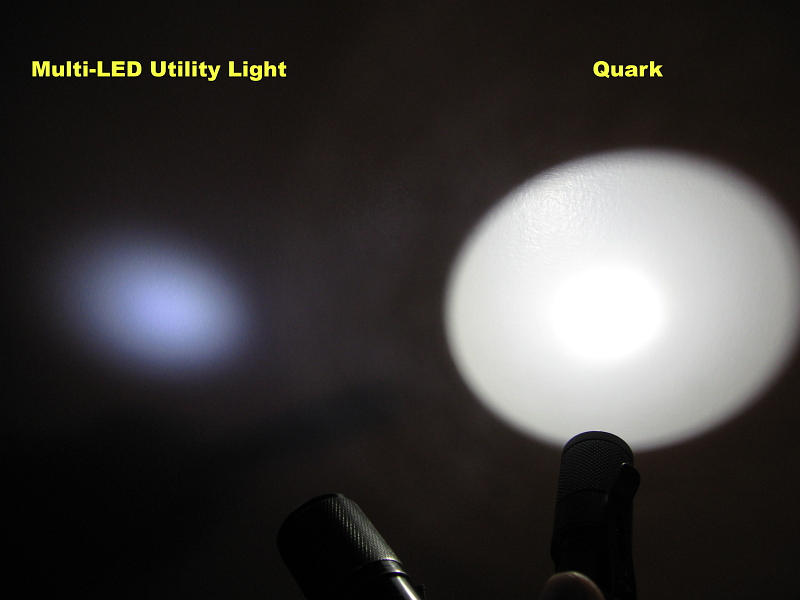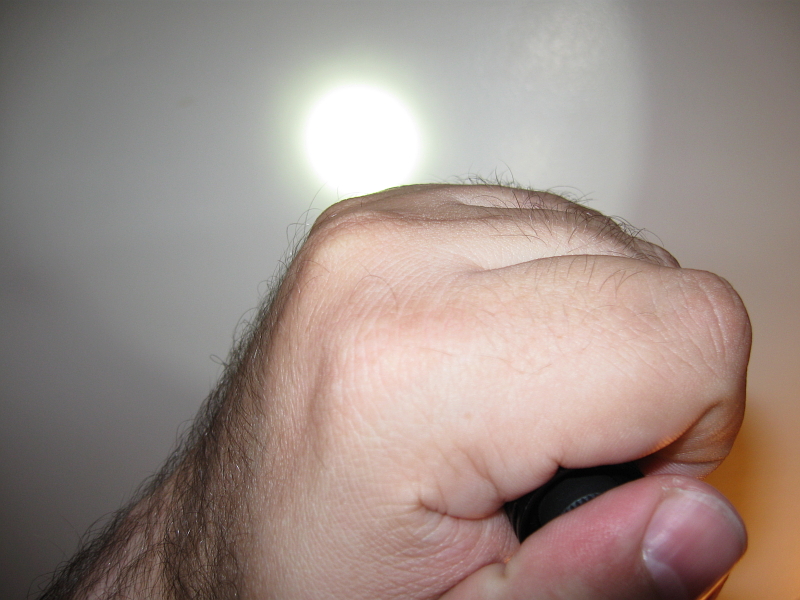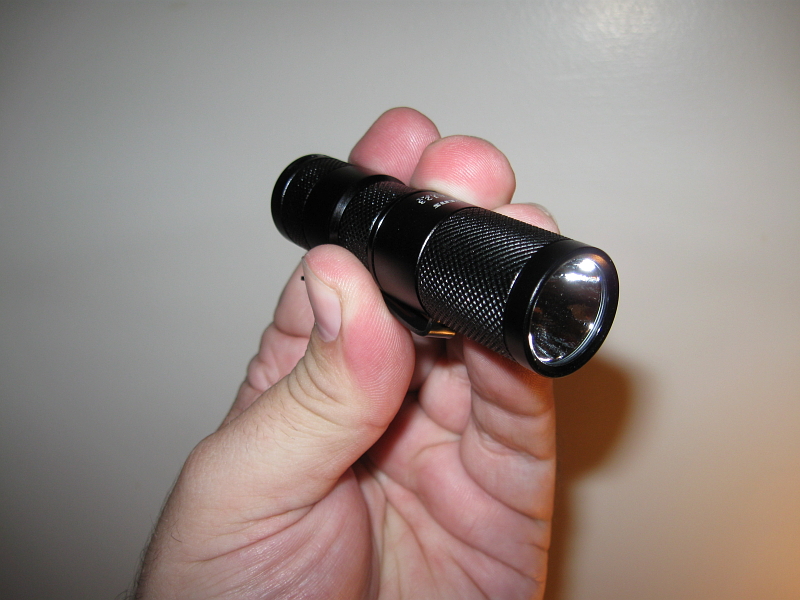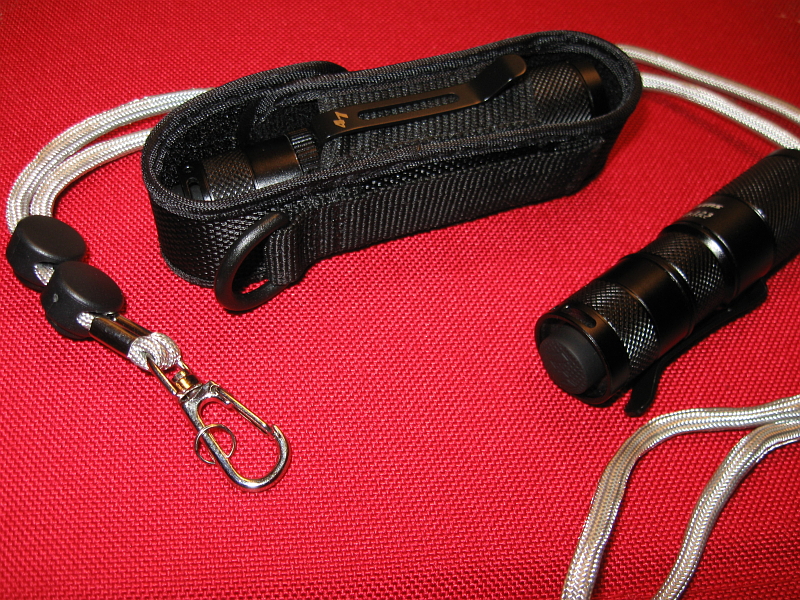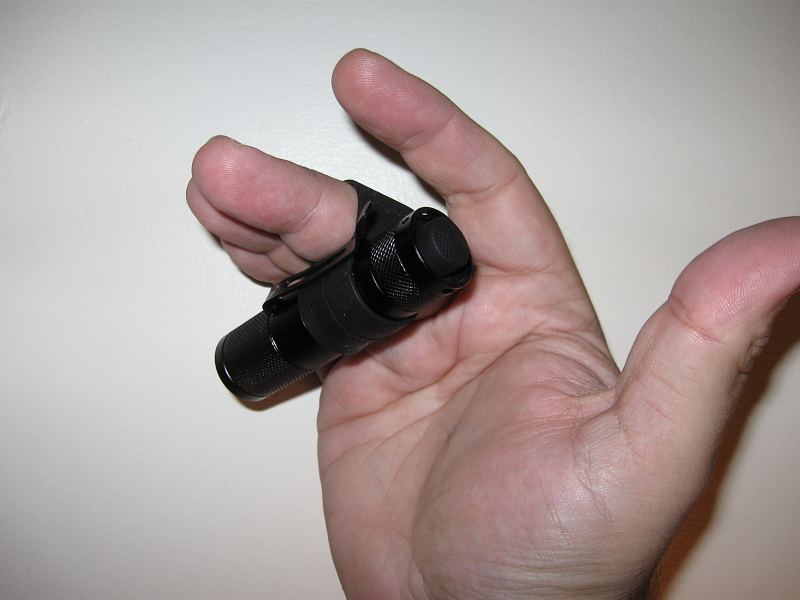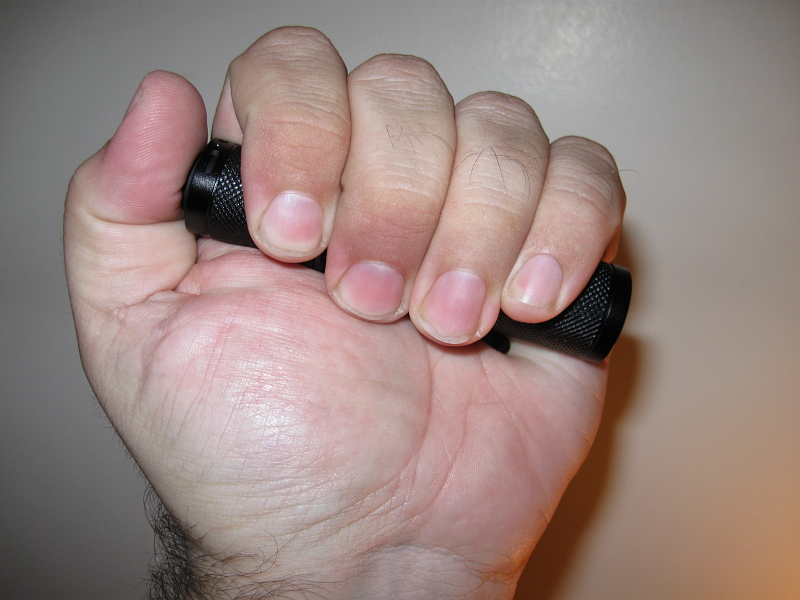4Sevens Quark 123 and Quark AA Tactical Models
Review by Phil Elmore
4Seven's Quark Tactical models are compact, daily-carry, pocket-sized, knurled and anodized T-6061 aluminum body LED flashlights that feature programmable brightness levels and metal pocket clips. Shipped with thoughtful accessories (including extra O-rings, Nylon sheaths, and adjustable lanyards), these lights are an ideal combination of size, features, and workmanship to make them "tactical utility" illumination tools. Varying slightly in size due to the dimensions of their power sources, the AA and 123 models offer the user a choice between increased power and availability of consumables.
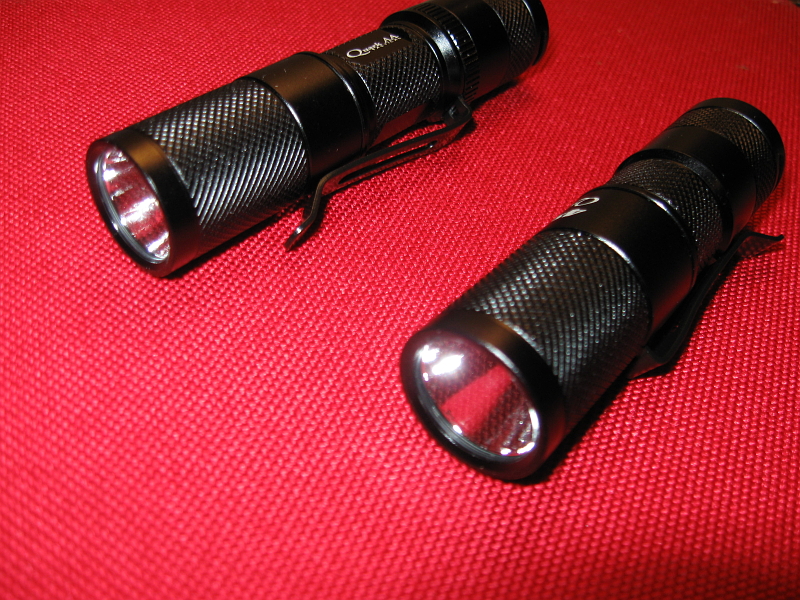
4Sevens' website states that the company's goal is to provide "the best lights for the best value, without compromising quality." Based on my experience with these lights (and their utility sibling, the D10), I would have to agree. For context, the company is also responsible for the Fenix line of lights, with which many consumers of tactical and utility flashlights will be familiar.
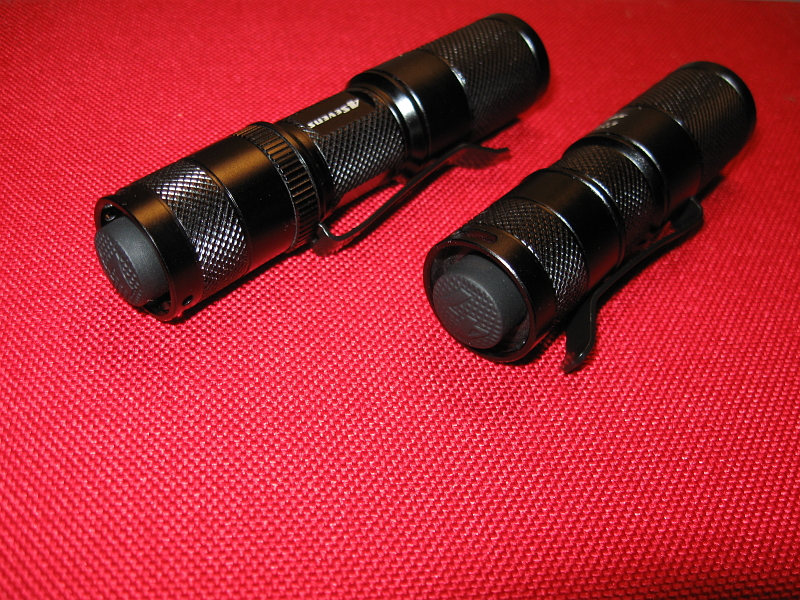
First, let's run down the technical specifications of each light:
Quark
AA Tactical
Power: 1 AA Alkaline Battery
Output Max/Min: 90 Lumens/0.2 Lumens
Runtime Max/Min: 1.2 Hours/10 Days
Light Modes: Moonlight/Low/Medium/High/SOS/Strobe/Beacon
Length/Diameter: 3.8 inches/0.86 inches
Quark
123 Tactical
Power: 1 CR123A Lithium Battery
Output Max/Min: 170 Lumens/0.2 Lumens
Runtime Max/Min: 0.8 Hours/15 Days
Light Modes: Moonlight/Low/Medium/High/SOS/Strobe/Beacon
Length/Diameter: 3.2 inches/0.86 inches
The difference in size and maximum power outputs is a function of the power sources. The more commonly available AA cell cannot offer the same maximum brightness that the CR123A can pump out (and at its maximum setting the CR123A is depleted faster). To be honest, once a light starts emitting more than 100 lumens or so, I lose track of the difference between freaking bright and really freaking bright. Because these lights are controlled by circuitry, the user can program them for the brightness level desired from among the available options.
I won't reproduce the instructions here in writing; you'll need to read them with one of these lights in hand, anyway. By turning the head of the light loose and then tight several times, it will blink, signaling that you're now programming one of the two modes (head loose or head tight). You can then cycle through the modes, choosing from several brightness levels, a blinking SOS signal, a pulsing, nausea-inducing strobe, and a beacon blinker.
As someone who's not the most mechanical fellow in the world, I had to play with the lights for a while before I got the hang of programming the brightness. You have to click the tailcap to cycle through the brightness modes at a specific pace -- not to fast, or the change won't take effect. You also must take care, while changing settings, not to look into the light (like I did), or you'll find the light changing to a brighter mode and blinding you temporarily.
Once you've read the instructions, played with the light, and gotten comfortable with adjusting the settings, you'll find you have a very powerful lighting tool in your possession. You can choose the brightness that is best suited to your particular utility task, emergency, or self-defense application.
These lights are bright enough, on their brightest settings, to be used as weapon lights, for example. By this I mean you could hold the light in your off hand and use the momentary-on feature (by pressing but not clicking fully the tailcap switch) with the brightest setting programmed. At its highest level, this is one bright but incredibly compact little flashlight in either configuration. (The irony is that the smaller of the two can also be the brighter of the two.)
On the lowest settings, such as the dim "moonlight" setting, the light is perfect for tasks like checking your watch in a darkened movie theater (while not blinding everyone around you, or drawing undue attention to yourself with a pillar of staggeringly bright white light). Depending on your preferences you could choose one of the other settings on the spectrum between the light's lowest and highest levels of output. Your desire to spare the battery, extending its life for the duration of a specific scenario, might drive your choice. Incidentally, the light produced is nicely white, not nearly so blue-tinted as one gets from some LED lights.
Fit and finish of the lights is superb. They exhibit good workmanship throughout, feel very solid, and have holes/slots in the tail ends that allow the user to affix the provided lanyard. The switches feel positive, too. The fact that a solid click will cause the light to enter "always on" mode is an issue for some tactical users, who prefer not to be able to click the light all the way on under stress, but I personally like the feature in a light of this size. Another click of the switch will turn the light off if the user accidentally switches it all the way on, of course.
The pocket clips work just fine and had good tension out of the box. The AA model's is removable and reversible, while the 123 model's clip is permanently affixed. One advantage of the pocket clip is that it gets the light up out of the depths of your pocket, sparing the finish to some degree while keeping the light in the same place and position at all times. You could also use the provided Nylon sheaths, which have hook-and-loop closures, a strap for belt carry (vertical only), and a D-ring for attachment to gear.
A rubberized finger loop is provided, which allows you to affix the light to your hand so it won't let go. I have never used such a feature on one of my flashlights myself, but it's exactly like affixing a loop to a pocket stick to allow the user to use his hands for grabbing or slapping while retaining the weapon. The fact that it is provided free of charge is a nice bonus.
Frankly, even the packaging of these lights is above average
for the
industry. Both lights shipped in very nice boxes that, it
seems
to me, should provide excellent protection in shipping and storage (if
you're the sort of person who retains the factory packing for an item
like this).
The utility benefits of such a light are obvious. The tactical function of a light used with a weapon is also obvious. Physically, these lights could be used as fist loads, too. They're not quite long enough for use as yawara/pocket sticks as I describe in the book Flashlight Fighting, but I have long carried a light of just this size as a daily pocket carry item. Larger lights sometimes get in the way, or aren't compatible with the mode of dress required. These are tactical lights that can be carried all day, every day, in complete concealment if necessary, or clipped to the pocket for convenience.
I can't say enough good things about these lights. They're of high quality, they offer features desirable in a daily carry tactical and utility light, and their programmable brightness levels allow you to choose the illumination that best meets your needs. While they may have more features than some consumers want or need, they will be ideally suited to a great many users who know exactly what they do want in varying day-to-day, first response, emergency, and tactical scenarios. >>
<< PhilElmore.com :: Go Home